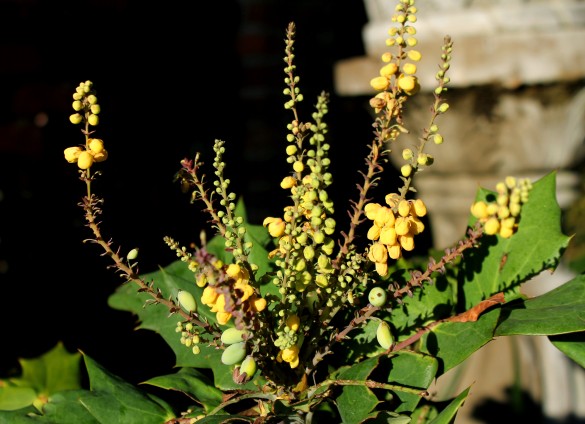 The Mahonia bealei, also known as Beale’s Barberry or Leatherleaf Mahonia, is an evergreen small shrub native to China. This plant flourishes in generally all of the United States, but are most common in Alabama, Florida, Georgia, Maryland, North Carolina, South Carolina and Virginia. Robert Fortune , a plant explorer, found the Mahonia bealei plant in China and named it after Mr. Beale of Shanghai. Mr. Beale cared for his plants. The genus Mahonia is said to be named after Thomas Jefferson’s garden mentor, Bernard McMahon. He played a role as one of the curators for the plants found during the Lewis and Clark expedition.
The Mahonia bealei, also known as Beale’s Barberry or Leatherleaf Mahonia, is an evergreen small shrub native to China. This plant flourishes in generally all of the United States, but are most common in Alabama, Florida, Georgia, Maryland, North Carolina, South Carolina and Virginia. Robert Fortune , a plant explorer, found the Mahonia bealei plant in China and named it after Mr. Beale of Shanghai. Mr. Beale cared for his plants. The genus Mahonia is said to be named after Thomas Jefferson’s garden mentor, Bernard McMahon. He played a role as one of the curators for the plants found during the Lewis and Clark expedition.
When taking a look at the Mahonia bealei, you’ll see the thick yellow-green leaves growing in a shape similar to Hollies with sharp points. These leaves protrude from a reddish stem. They tend to flourish with sweet smelling bright yellow flowers in winter and flowed by bright blue fruit in summer. The berries are sometimes eaten raw or made into different things like pies, jelly, and wine. The Mahonia bealei is very shade tolerant, and is usually found in woodland areas. It does not need a lot of direct sunlight to reach its full maturity.
Regardless of its Asian nativity, this plant represents American history and is a must see upon your next visit to the Cummer Gardens.


